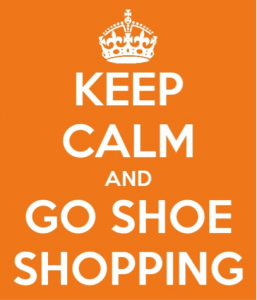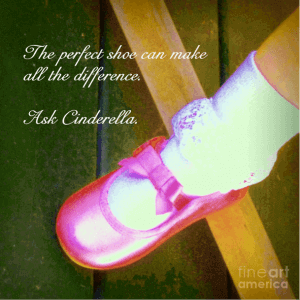The Better Shoe for You
There is nothing more important in the world of fitness than choosing the right equipment. Having the right tools is crucial to your success. Often that means choosing the appropriate weight to use, or choosing the appropriate intensity. But one thing that’s often overlooked is the equipment that supports and defends our body as we put it through some grueling and punishing work – I’m talking about your shoes.
Shoes do a lot of work for any fit-lete (think athlete but those pursuing fitness).
- They cushion by absorbing impact to lessen the effect on joints (toe joints, ankle joint, knees, hips – all the way up to the spine!).
- They support your joints during agility drills and turns to help prevent sprains.
- They support the physical structures of your feet – most notably your arch—to prevent over-stretch injuries and plantar fasciitis.
So you’d think that as important as a shoe is, that we’d take the time to pick the right one for our feet. But we don’t. How many times have you gone into a shoe store and bought a shoe because it looked awesome and felt fine when you tried it on for all of two minutes?
Don’t worry. I’m guilty of it also. But I think it might be a good idea for us all to be a little better informed on what we need to look for when we’re purchasing a new pair of shoes.
Here are nine tips to help you purchase a better shoe for you:
1) Shoes have a lifespan. Shoes are made to provide the maximum benefits for approximately 400 miles. So they need to be replaced regularly to be sure you’re feet are getting the support they need! General rule of thumb on when to replace? When the heel is worn.
2) Give your toes room to move. There should be about 3/8 to ½ of an inch between your longest toe and the end of the shoe.
3) No Heel Slip! Make sure your heels don’t slip in the shoe when you’re walking or running – that means they don’t fit and thus won’t provide you with the support you need.
4) They aren’t wild mustangs – they don’t need to be broken in. If they aren’t comfortable when you try them on in the store, don’t buy them.
5) BYOS—Bring Your Own Socks when you try shoes on. That way, you know how they’ll really feel.
6) Shop for shoes toward the end of the day. Your feet swell throughout the day, so if you purchase when they’re swollen, you know they’ll fit.
7) Be Specific. Shoes are not designed to multi-task. A cross training shoe will not do you justice when you’re participating in a road 5K. And a walking shoe won’t help you properly if you’re doing a mud run. So figure out what you participate in most and choose a shoe that’s sport specific.
8) Accessorize your shoes. Just because you buy a great pair of shoes may not eliminate the need to use inserts. Don’t see it as an inconvenience – see it as a cheaper option than custom shoes! Use them if you need them!
9) Inspection: No, this doesn’t require that you stand at attention at the end of your bunk while your drill instructor comes by with a white glove on their hand. Instead, pick up those tennis shoes that you’ve worn for what seems like forever, and take a look at their soles to find out what kind of walker/runner you are:
- If the top outer edge is worn, then you’re a supinator/under-pronator (this is technical talk about the movement of the foot). Supinator’s tend to have high arches and roll their feet outward. If this is you, look for: Soft midsoles for more shock absorption, a more flexible sole, and lastly, look at the shape of the shoe: it will cut in at the arch and resemble a kidney bean.
- If the sole is evenly worn, then you have a neutral step pattern with equal distribution across the foot when you move. So look for Stability or moderate-stability sneakers, which are a nice balance between cushioning and support. Your shoes are/should be: lightweight, and bend just to the ball of the foot
- If the top inner edge of those shoes are worn, then you are a pronator (your feet roll inward when you walk) and may have low or no arch in your feet. If this is the case, then look for motion-control or high-stability shoes to keep your feet better aligned with your legs. The right shoe for you: will often have a contrasting color (typically gray) near the arch (this is a denser material that gives your arch better support) and will be fairly stiff shoes that only flex near the toes.
These are some great and simple tips to get you started on finding the right shoe for you. But you should also know that many athletic shoe stores have experts that can analyze your gait pattern. So if you want to be doubly sure with your shoe choice – ask! These consults are almost always free, and will help ensure you find the right shoe for you.

